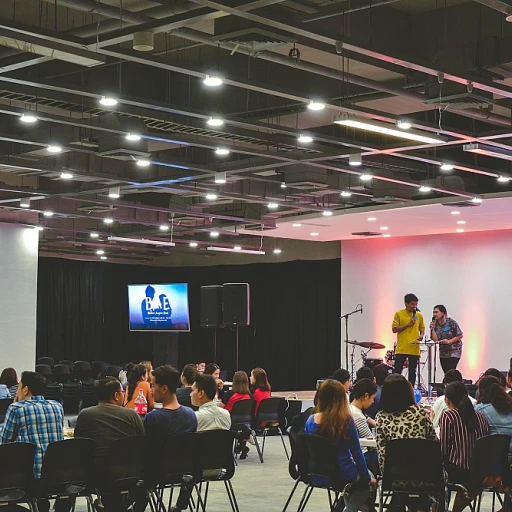
Understanding the Importance of SaaS Onboarding
Why the Onboarding Process is Critical for SaaS
When it comes to SaaS, the onboarding process can spell the difference between a thriving product and unused software collecting digital dust. This early interaction sets the stage for the entire customer experience and plays a pivotal role in guiding users through the functionalities of a product. Understandably, customer onboarding holds a wealth of importance for SaaS providers eager to improve user experiences and drive product adoption. The onboarding experience starts the moment a user engages with the software, and it's crucial in influencing their perception of the brand. Well-structured onboarding processes not only help customers navigate through key features but also foster confidence in using the tools provided by the service. By addressing user behavior and simplifying the journey, businesses can ensure higher customer success rates. A well-executed onboarding flow helps new users leverage the product effectively, leading to substantial customer satisfaction. Equally, when customers understand how to use the platform efficiently, they're more likely to remain loyal and utilize additional features. In this light, onboarding acts as a support mechanism, offering necessary guidance to ensure users can derive the most value from the software. Effectively managing this process can be challenging, but enhancing your onboarding process with the right tools and strategies can ease these hurdles and lead to a smoother transition for all users. Whether it's through product tours, detailed knowledge bases, or user-friendly interfaces, optimizing the onboarding journey is indispensable for sustaining a successful SaaS product. It's clear that putting focused efforts into the onboarding phase has tangible benefits. Businesses gain more engaged and informed customers, while users are equipped with the tools and knowledge they need to excel with the service. This creates an ecosystem of empowered users, contributing to sustained product success and customer loyalty.Key Elements of a Successful Onboarding Process
Establishing a Robust Onboarding Framework
Developing a thorough SaaS customer onboarding process is crucial for ensuring a seamless user experience. A well-structured framework not only facilitates the successful introduction of your product to the market but also ensures sustainable customer adoption and retention. Below are some key elements that contribute to a successful onboarding journey:- Clear Communication: Begin with setting user expectations and clarify every step of the onboarding flow. Through regular interaction, help customers understand the value of your app and prepare them for long-term success.
- Product Tours and Tutorials: Interactive product tours provide users with a hands-on experience of the software's key features. Enable customers to explore core functionalities, making the entry experience intuitive and engaging.
- Comprehensive Knowledge Base: Equip new users with accessible, self-service resources. A well-maintained knowledge base addresses common queries, minimizing the need for direct customer support.
- Effective Use of Data: Leverage analytics to track user behavior and the overall effectiveness of the onboarding process. Gathering insights will empower your platform to rapidly iterate and refine onboarding experiences to better meet user needs.
- Personalized Support: Tailor guidance and support to fit unique customer needs. Address specific challenges and provide relevant resources, thus enhancing the overall user experience.
Challenges in SaaS Onboarding and How to Overcome Them
Identifying and Overcoming Common Obstacles
As pivotal as the onboarding process is for SaaS success, it is not without its challenges. Understanding and addressing these common obstacles is essential for ensuring a seamless onboarding experience that promotes user satisfaction and product adoption.
One major challenge often encountered during onboarding is the complexity of the software or platform itself. When users are faced with a multitude of features and functionalities, it's easy for them to become overwhelmed. This is where designing an intuitive onboarding flow and offering guided product tours can play a critical role. Providing clear directions and segmenting the onboarding into bite-sized phases helps users to acclimate to the service in a manageable way.
Another significant hurdle is the time it takes to implement and execute the onboarding process. Organizations must weigh the need for comprehensive customer support against the necessity for swift onboarding, aiming for an efficient balance. This is where customized onboarding tools and options, such as a detailed knowledge base, can expedite this process without sacrificing quality.
Furthermore, understanding user behavior is critical in fine-tuning the onboarding experience. By utilizing data-driven insights, companies can identify where users face difficulties and adjust the onboarding experience accordingly. For instance, if SaaS customers frequently exit the onboarding at a specific step, this may indicate a need for additional customer onboarding support or simplification of the process.
Finally, ensuring that there is adequate customer engagement throughout the onboarding is necessary to foster product loyalty and customer success. Utilization of feedback loops and continuous support enhances the user experience, enabling users to unlock the full potential of the app or software.
The Role of Automation in Streamlining Onboarding
The Power of Automation in Creating a Seamless Experience
In the competitive landscape of software as a service (SaaS), ensuring an efficient onboarding process can significantly impact user experience and customer satisfaction. Automation has emerged as a transformative tool in streamlining onboarding, making it less time-consuming and more effective for both SaaS companies and their customers.
Firstly, automation reduces the time and effort required in the onboarding process. By automating repetitive tasks, like user data collection and account setup, companies can speed up the user onboarding experience, leading to quicker product adoption and customer success. This efficiency is crucial for SaaS platforms where time is of the essence and users expect a smooth transition to your software.
Additionally, automation in SaaS onboarding allows for personalized customer experiences. Automated systems can track user behavior and preferences, tailoring the onboarding flow to meet individual needs and highlight key features relevant to each customer. This personalization not only enhances the user experience but also increases the likelihood of users engaging with the full spectrum of product features.
Moreover, automated onboarding tools, such as product tours and self-service knowledge bases, provide continuous support without overwhelming your customer support teams. These tools can guide users through the app and its features, ensuring they fully understand the platform's capabilities and how they can benefit their operations.
Lastly, automation enables the consistent collection and analysis of onboarding data. This data is invaluable for understanding customer behavior, identifying pain points in the onboarding experience, and refining the process for future users. By leveraging this information, SaaS companies can continuously improve their onboarding strategies, reinforcing customer support and overall satisfaction.
In conclusion, the implementation of automation in the onboarding process is essential for SaaS companies striving to provide a seamless, efficient, and engaging user experience. As technology evolves, automation will continue to play a pivotal role in meeting the expectations and needs of SaaS customers.
Measuring the Success of Your Onboarding Process
Assessing the Effectiveness of SaaS Onboarding
Measuring the success of your SaaS onboarding process is crucial to ensure that users are getting the most out of the product and that the customer onboarding experience is seamless. Here are some key considerations to keep in mind:- Time to First Value (TTFV): This metric indicates how quickly a user can achieve their first major success or goal with your software. A shorter TTFV often correlates with higher customer satisfaction and retention.
- User Engagement: Monitor how customers interact with your product. Metrics such as active user rates, session durations, and feature usage can provide insights into the effectiveness of your onboarding flow.
- Churn Rate: A high churn rate could suggest flaws in your onboarding process. Understand these attrition patterns and utilize onboarding tools to address the underlying issues.
- Customer Feedback: Collect qualitative data through surveys and feedback forms. User feedback can highlight areas for improvement in the onboarding journey and help improve future onboarding experiences.
- Product Adoption Rates: Track how effectively users are adopting key features of your service. This could indicate how well your onboarding process is communicating the value of the product.
- Support Tickets: A decrease in customer support inquiries related to onboarding can signal a successful outcome. Comprehensive knowledge bases and effective product tours can reduce the need for support.
Future Trends in SaaS Onboarding
Trends Shaping the Future of SaaS Onboarding
The SaaS onboarding landscape is continuously evolving with advancements in technology and changing user expectations. Understanding these trends is essential in creating a seamless onboarding experience for customers and ensuring long-term product adoption.- Personalization Through AI: As artificial intelligence continues to advance, SaaS onboarding processes can offer more personalized experiences. By analyzing user data and behavior, AI helps tailor the onboarding journey to meet individual customer needs, enhancing user engagement and satisfaction.
- Improved Customer Support: In the future, customer support will likely integrate more sophisticated tools such as chatbots and automated helpdesks. This evolution in services allows users to receive instant assistance during the onboarding phase, addressing their queries efficiently and increasing trust in the platform.
- Interactive Product Tours: Emerging onboarding tools are focusing more on interactive product tours. These not only engage users from the start but also provide them with a comprehensive understanding of the product features, minimizing the time taken to reach proficiency and promoting quicker product adoption.
- Focus on Seamless User Experience: The demand for intuitive and smooth onboarding experiences will drive the development of more user-friendly interfaces and platforms. Ensuring that the onboarding process does not overwhelm users is key, with tooltips and gradual feature introductions becoming more common.
- Expansion of Knowledge Bases: As products become more complex, the need for extensive knowledge bases grows. Companies will invest further in creating comprehensive resources to facilitate user onboarding, allowing customers to learn at their own pace while still having ample support.
- Data-Driven Decisions: Going forward, using analytics to track onboarding success will become even more critical. By analyzing metrics such as user retention and feature adoption, companies can refine their onboarding flow to better meet user expectations and improve the overall customer success rate.












